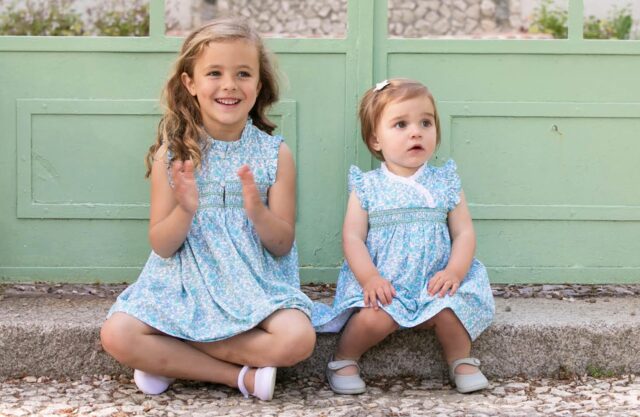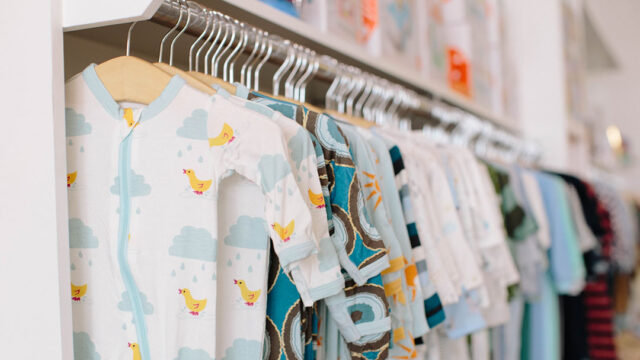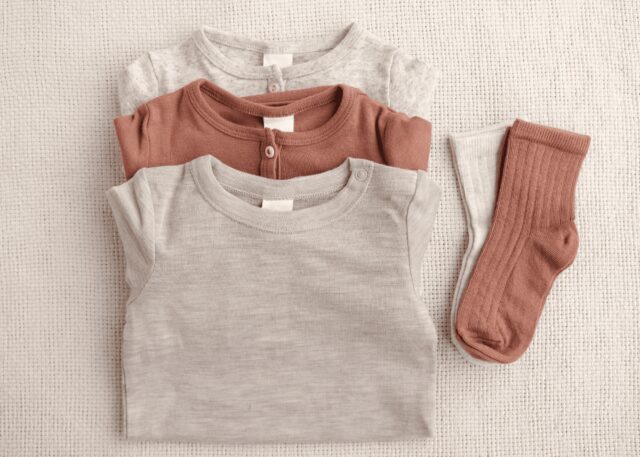
All parents know how frequently young kids and newborns require a change of their clothes during the day and how rapidly they outgrow their clothes. How does this affect the environment, and is there a solution? Several factors, like using toxic substances in textile manufacture, the shipping and distribution of clothing, and the disposal of out-of-style apparel, can cause an adverse environmental effect due to kids’ fashion.
There are several reasons constituting the importance of sustainable kids’ clothing. Eco-Friendly clothing is usually more gentle on your kid’s skin and offers better comfort. Additionally, as more ecologically friendly solutions are sought after by consumers, sustainable apparel is becoming increasingly common. Several sustainable textiles for children’s clothing often have moisture-wicking, antimicrobial, and hypoallergenic properties making the dressing experience happier and germ-free for your little one.

How Is The Kids Clothing Industry Harming The Environment?
The following are a few ways that the children’s apparel sector may impact the surroundings:
- Little ones overgrow rapidly; thus, their clothing frequently becomes old or worn out before you can use it for a long time. As a consequence of more production, textile waste could harm the ecosystem.
- Several kid’s apparel firms practice fast fashion, creating apparel quickly and inexpensively to keep up with shifting trends. It commonly leads to terrible working conditions for factory workers and a significant adverse environmental impact, using artificial substances and chemicals.
- Many items of children’s clothes consist of synthetic components that have undergone chemical treatments to make them chemically resistant to fire, water, and wrinkling. The emission of these substances may emit pollutants into the air or water that could affect the environment. Due to their non-biodegradability and potential to leak microplastics into the atmosphere, artificial fibers like polyester in children’s apparel additionally lead to ecological damage.
- Children’s apparel frequently comes in plastic bags, which can add to the plastic pollution problem if not dealt with properly.
- Children’s clothing has a significant carbon footprint in manufacturing, shipping, and disposal. The movement and delivery of garments add to the emission of greenhouse gasses.
Ways To Produce Clothes In Eco-Friendly Ways
When buying clothing for kids, it’s crucial to consider sustainability and make thoughtful decisions. Here are some examples of how manufacturers of children’s clothes are making garments in a less hazardous manner:

Utilizing Organic And Eco-Friendly Materials
By choosing organic materials, you can reduce the amount of harmful waste discharged into the environment by avoiding using pesticides, insecticides, and herbicides throughout the growing process. These actions are not simply moral but also aim for long-term sustainability.
Making Use Of Sustainable Packaging
Today, there are several substitutes for plastic packaging. Therefore children’s clothing companies must avoid using it.
Producing Good Quality Clothing
A higher initial cost may result in more savings down the road. Purchasing fewer items from a good-quality children’s brand may result in a longer wear life, instead of buying more from cheaper or more famous brands.
Domestic Produce
Local manufacturing benefits the community’s economy and workers, lessening the carbon impact often associated with international shipping and distribution.
Producing Smaller Bulks
Brands can produce in lesser quantities and lessen the amount of textile waste that goes to landfills. The cost of doing this is higher since major mass-market companies prefer to have it in more significant quantities at lower prices and with more economical shipping. Encourage smaller companies that produce in more limited quantities and pay their employees a regular salary.

Benefits Of Sustainable Clothing For Your Little Ones
The following are the benefits of sustainable kids’ clothing:
- Every day, clothing comes in contact with the skin. Therefore, it is crucial to remember that children’s clothing should be free of any dangerous chemicals. Smaller kids’ skin is sensitive and more absorbent to synthetic substances. They also put their garments in their mouth, making them even more susceptible to toxic materials. Hence, organic clothing is beneficial for your little one’s good health.
- Children should wear clothes made of natural fibers, especially cotton, as they are soft and cozy, and comfortable. These materials are simple to maintain and promote good skin ventilation. It’s crucial to avoid chemical toxicity when selecting a suitable fabric. In this regard, organic cotton is unquestionably the victor.
- Organic cotton fibers of organic garments are kinder to the environment since they lack exposure to toxic chemicals. Clothing should be kept from being regularly thrown away in the trash. Recycling, reusing, and handling clothing for younger children should be standard practice. This is only conceivable if the garment retains its aesthetic appeal after serving its intended purpose rather than turning into a worn-out rag. Organic clothing is suitable for regular use over a more extended period because it is durable and persistent.
How To Differentiate Between Organic And Non-Organic Clothing?
Parent’s these days are more mindful and thoughtful when it comes to their children’s shopping. They are well-connected globally due to traveling and the constant use of social media. Today’s parents of young children are well-traveled, connected to the world, and supportive of conscious, thoughtful parenting. Even though parents know the benefits of sustainable clothing, verifying the legitimacy of organic products is frequently challenging.
You can check the GOTS (Global Organic Textile Standard) certificate on the tag or packing of an organic item to determine its validity. A GOTS mark indicates that the good’s raw materials are 100% pure organic and made using environmentally conscious manufacturing methods. Many believe organic cotton clothing is monotonous, pricey, and only suitable for special occasions. Contrarily, organic cotton clothing can be upbeat, colorful, inexpensive, low-maintenance, and unquestionably intended for everyday use.

Conclusion
Although eco-friendly clothing is frequently costlier than traditional alternatives, there are things that you must consider. For instance, sustainable apparel is often made from higher-quality materials with a longer lifespan in mind. Eco-friendly clothing firms usually employ ethical labor practices and ecologically sound manufacturing processes. Sustainable clothes offer more excellent value concerning both functionality and ethics.
Businesses that make environmentally friendly children’s apparel are doing a fantastic job of ensuring that children in the future have an ecologically sound planet to grow up on. These actions contribute to making a more environmentally friendly item that will endure longer, less likely to wind up in garbage dumps and lower the business’s ecological footprint.









